This is an excerpt from The Food of Love Please feel free to share the images and the post but don’t forget to credit www.cartoonkate.co.uk.
The thing is, babies don’t feed from the breast the same way that they feed from a bottle.
To bottle-feed a baby, you place the rubber teat of the bottle between her gums, she sucks and the milk drips in.
You don’t force the end of the teat way back into the baby’s mouth. That would choke her.
Breastfeeding is different. Here the baby’s gums have to mash right up into the milk reservoirs, behind the areola (the dark bit), actually in the breast. The tongue pulses along the length of the breast, it’s rhythmic contractions help to keep the milk spurting, and the nipple itself is right at the back of the baby’s mouth. The baby is described as being latched on. You’ll see why. She gets hold of a sizeable portion of your breast, and she’ll be pretty firmly attached. Don’t get squeamish at the thought. It feels really nice.
If your baby just sucks at your nipple, rather than your whole breast, breastfeeding is going to be a painful and unsatisfying experience for the two of you. Your baby won’t get enough milk to satisfy her, and you will suffer from ‘nipple trauma’ (great phrase, huh?)
You can see how this works for yourself. In late pregnancy, while you are enjoying a long, luxurious, uninterrupted bath (make the most of it) try gently squeezing the area behind your nipple.
Make a C-shape with two fingers and thumb.
Push your hand back into your breast, towards your chest wall…
…gently roll your thumb over towards your nipple, and shift the pressure from your second to first finger.
Did you get a drop of milk? Did you? Wahey! Welcome to the world of lactation!
Don’t worry if you can’t find any milk, it will arrive when the baby comes. Anyway, the point is that the milk is stored in a kind of ‘well’ deep inside the breast, behind the nipples. See if you can feel where it is. That’s where the baby’s mouth has to reach.
You don’t need me to tell you that your nipples are extremely sensitive. The trick is to get that nipple right past your baby’s gums and tongue, so they don’t rub against it while feeding.
Blimey. Here you are with a baby that’s smaller than anybody you’ve ever met, and you have to feed her with breasts that are larger than any you’ve ever had before. It’s not a good idea for someone else to try and force the baby onto your nipple, you have to do this yourself. To make it easier, here are some ridiculously detailed instructions.
1) OK, relax, you can do this.
Tie your clothes out of the way so you can see what you are doing. Or take your top off. It is natural and good to hold your baby next to your skin.
You will need a drink of water – sports bottles are good as you can knock them over as much as you like.
Your baby doesn’t need to be screaming with hunger for you to feed her. Don’t wait that long, or she’ll learn she has to scream the house down everytime she gets a bit peckish. When babies are hungry, they move their mouths sideways, and try to eat the edge of the blanket.
You have to be careful to hold your baby in the right position when you start out, because a newborn’s mouth is so tiny, and you’re both just learning how to do this. You may need pillows, and props, and special chairs, and a light or a torch at night. Hey, in a few months her mouth will have grown and you’ll both be experts at this feeding thing. You’ll be able to breastfeed while water-skiing by then.
2) Sit up straight.
Have your thighs level, your feet resting flat on the floor, (on some books if you need to) and your arms supported by firm armrests or pillows. Have some more pillows handy to lay the baby on.
If you’re sitting on a sofa, try putting cushions behind you and underneath you, so you sit higher and straighter.
Don’t slouch or hunch over your baby. It makes your breasts a funny shape and it will, in a very short space of time, give you a cracking backache.
You can try standing up to breastfeed.
Sitting up cross-legged in bed is a good one.
If you can’t sit up straight
(like, the epidural hasn’t worn off yet) you can lie down on your side.
3) Now get the baby.
There are a few different ways you can hold her…
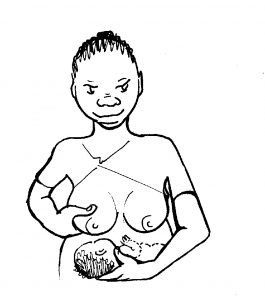 This is the Transition hold, and it’s a very good one for beginners. You can support your breast and guide the nipple towards her mouth. Let her neck and the base of her head rest gently in the V between your finger and thumb. Don’t cup the back of her head.
This is the Transition hold, and it’s a very good one for beginners. You can support your breast and guide the nipple towards her mouth. Let her neck and the base of her head rest gently in the V between your finger and thumb. Don’t cup the back of her head.
This is the Cradle hold. Slightly more tricky as you have less control. Support your baby’s head on your forearm, not in the crook of your elbow (unless your nipples point out to the sides – some women’s do).
This is the Rugby ball hold. Lay the baby under your armpit, again supporting her neck and shoulders, not her head. You can guide your breast with your free hand. This position is easy, comfy and useful.
4) Support the baby at the breast.
Stack up some pillows or folded blankets under the baby. Get a nice firm base so the pillows take her weight – that way your arms won’t get tired during the feed.
If you are using the Rugby Ball hold, you may find that the arm of the chair or sofa will support the baby nicely. If you are lying down, play around with pillows and rolled up blankets – put them behind you and the baby so you don’t roll away on the bed, or under either you or your baby until she’s right at nipple height.
Don’t stoop down or lean over your child. Remember: bring the baby to the breast, not the other way round.
Some women have high, perky nipples…
… and some women have lower, softer, larger breasts…
…therefore the number of pillows you need at this point is going to be a personal thing.
Where are your nipples?
Go and have a look in a mirror.
5) Line her up, and tuck her body in close to you.
Rest her top lip by your nipple. Her head should be in line with her body, not turned to one side. It is hard to swallow when your head is turned to the side (try it). Let her naturally tip her head back a tiny bit to get her mouth and chin right up close to your breast.
6) Nuzzle her into the areola, under the nipple.
See how clever she is? She already knows to root around and find the nipple. If she isn’t interested, squirt a little milk on to her lips – that should remind her what this is all about.
7) Wait for the wide open mouth.
See that tongue come out towards the nipple. Relax.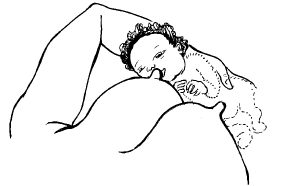
8) Aim your nipple in towards the roof of her mouth.
Then, with the arm that’s under the baby, bring the whole baby in towards you so she can get a nice big mouthful of breast. Did you get that? Bring the baby to the breast. Don’t lean over and shove the breast into the baby.
Are her head and body still in a straight line? Her head doesn’t want to be squashed forward to reach you.
Or try this one: press your thumb into your breast so the nipple points up, away from her mouth, get her to take a big mouthful of the areola underneath your nipple, and let your nipple fold upwards as she sucks your breast into her mouth. This gets the nipple right to the back of her mouth, clear of the tongue.
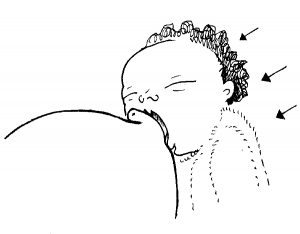 You can experiment with these two methods until you get her latched on right.
You can experiment with these two methods until you get her latched on right.
This is the target area. As you can see, you are actually trying to attach the baby a bit lopsided, with more of the underside of your breast in her mouth than the top.
Why? Well, there’s a blinking great tongue in the middle of her mouth. If you try and poke your nipple into the centre of her mouth, it will get stuck on the tongue, instead of being sucked past it.
See what works best for your baby and your nipples. If you have large nipples and your baby has a small mouth, you’ll probably have to try a few times. It’s easier to attach a baby to nipples that are soft, so if your breasts are rock hard and full of milk, try squeezing some out onto a towel.
9) How does it look?
It can be quite difficult to see when a baby is latched on properly, because her whole face is kind of buried in your breast.
Her chin will be in close to your breast, and her bottom lip should be folded outwards. You can’t see this unless you push a finger into your breast to check.
Keep her face level, so that both of her cheeks touch your breast equally. This causes your nipples least stress.
If you have large breasts then her nose may also be covered. Most babies can still breathe, through the little grooves at the base of their nostrils (I bet you never knew what they were for before.) Some babies really can’t breathe, so you need to gently press the breast in towards her to make an airway.
How does it feel? It should feel OK. Not painful. A bit intense maybe, but not sore.
She’ll probably give a few deep sucks, then settle down to a pattern of sucking a few times, pausing for quite a few seconds, then sucking some more. Watch for the wiggling ears – that’s a good sign that she’s on well and getting some milk.

here the mother has flipped her baby’s head forward – now she is at the wrong angle to suckle properly
If her mouth didn’t open wide enough, then she’ll just be sucking on the end of your nipple. It will feel like your nipple is being pinched or rubbed, which indeed it is. There will be space between her chin and your breast, and she will be pulled away from the areola rather than squashed onto it. Clicking or sucking noises are a sign that she may not be latched on right. Check that she hasn’t sucked her bottom lip into her mouth.
If you haven’t got her lined up with your nipple right, then your breast will be being dragged sideways into her mouth as she sucks. Ouch, more nipple trauma. If her head is bobbing about while she sucks, or if your breast is moving in little waves near her chin, then see how it feels to shift her slightly. When you get her lined up correctly then your breast and her head should both be fairly still, apart from the wiggling ears.
Not right? Break the suction by putting your little finger in the corner of her mouth.
Take her off
breathe out
relax, and try again.
Experiment a bit with how to get her on comfortably. No-one expects you to be able to do this right on the first go.
10) What happens now?
Well, you just sit there and enjoy it. Suckling stimulates your brain to produce oxytocin (the same hormone that is produced when you make love – bonus!) which in turn makes your breasts contract, and squeezes out the milk.
This is known as the ‘let-down reflex’, which is spectacularly mis-named; you feel anything but ‘let down’. It’s also called the ‘milk-ejection reflex’. I like the phrase ‘milky feeling’, because that’s what it is.
A milky feeling differs from woman to woman. You might feel a warm glow of contentedness. You might feel a random patch of tingling, on your shoulder say, or in your toes. The feeling might be different depending on which breast is being suckled. You might not notice any particular feeling at all.
You will probably get thirsty when you breastfeed. Let’s hope that water bottle is within reach.
You might feel some crampy period pains the first times you feed, as your womb shrinks back to size. These ‘afterpains’ can be really bad with your second or third child.
If your baby falls asleep after a couple of minutes, then tickle her, talk to her or sit her up and wind her. See if she will wake up to feed a little more.
11) Your baby knows when she’s had enough.
Your breasts fill up between feeds with watery foremilk. This is a thin, sweet thirst-quencher that is low in calories. Your baby doesn’t need any extra bottles of water, as your body will cunningly make more of this in hot weather.
After a while, your breast feels deflated because this foremilk has emptied out. Don’t take the baby off. She hasn’t had the good stuff yet.
The other two-thirds of the feed is produced as you go along. The baby slows down to a tranced out, blissful state where she munches a few times, then pauses for half a minute, then munches some more. This is when she’s getting the calories. Your breast is forming creamy, rich hindmilk with all the energy in it for growing.
This is not comfort feeding. It is the building stuff of life. If you cut the feed short, stick a dummy in her mouth and get up to do something really urgent, then she’ll probably drift off to sleep. But if you don’t have to, then don’t.
Letting your baby feed for as long as she wants to allows your body to learn how much milk she needs, and is the best way of ‘programming’ your breasts to increase your milk supply.
Eventually she’ll come off of her own accord with a snoozy, shiny ‘milk-drunk’ face. It’s lovely.
12) Hold her up and pat her to let the bubbles come out.
See if she wants the other breast. She might do, or she might not.
13) Feed from the other breast first next time.
There. That’s how you feed a baby.
Hey, go and refill your water bottle!
Food of Love, The: Your Formula for Successful BreastfeedingHi
£16.00
A topical, refreshingly different approach to breastfeeding successfully. Features honest discussions about childcare and lots of fantastically funny illustrations.
Kate Evans’ brilliant cartoons offer hope and inspiration. And they’re funny, too. The Independent
My Shopping CartDescription
A topical, refreshingly different approach to breastfeeding successfully. Features honest discussions about childcare and lots of fantastically funny illustrations.
- Paperback: 208 pages
- Publisher: MYRIAD EDITIONS; 2nd edition (6 Nov. 2008)
- Language: English
- ISBN-10: 0954930959
- ISBN-13: 978-0954930950
- Product Dimensions: 21 x 1.6 x 21 cm
Kate Evans’ brilliant cartoons offer hope and inspiration. And they’re funny, too. The Independent
‘I love your book! Very well-written and researched and great drawings too.’ — SUE GERHARDT, author of Why Love Matters: How Affection Shapes a Baby’s Brain
‘Vibrant, exciting, funny – there’s really nothing else like it. It’s so honest and based on up-to-date research.’ — SHEILA KITZINGER
This book is meant as a funny, handy guide to help new mothers enjoy their baby and is a valuable addition to the existing literature on the emotive subject of breastfeeding. The book is easy to read and… includes numerous pictures to look at if you are feeling too tired or brain-dead to read. It is a fun way to present the advantages of breastfeeding, yet Kate Evans has also included the latest facts and research surrounding breastfeeding… The Food of Love will meet the needs of many new mums and is likely to be of use to breastfeeding counsellors, antenatal teachers, midwives and health professionals. — New Digest NCT Newsletter
£16 with free postage within the UK – add £5 for postage to outside the UK.
I sign all the books I send out. It’s nice to add a personal dedication though, so please let me know what name to write using the form below:
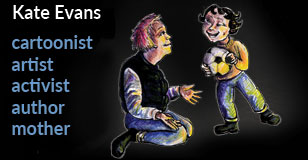
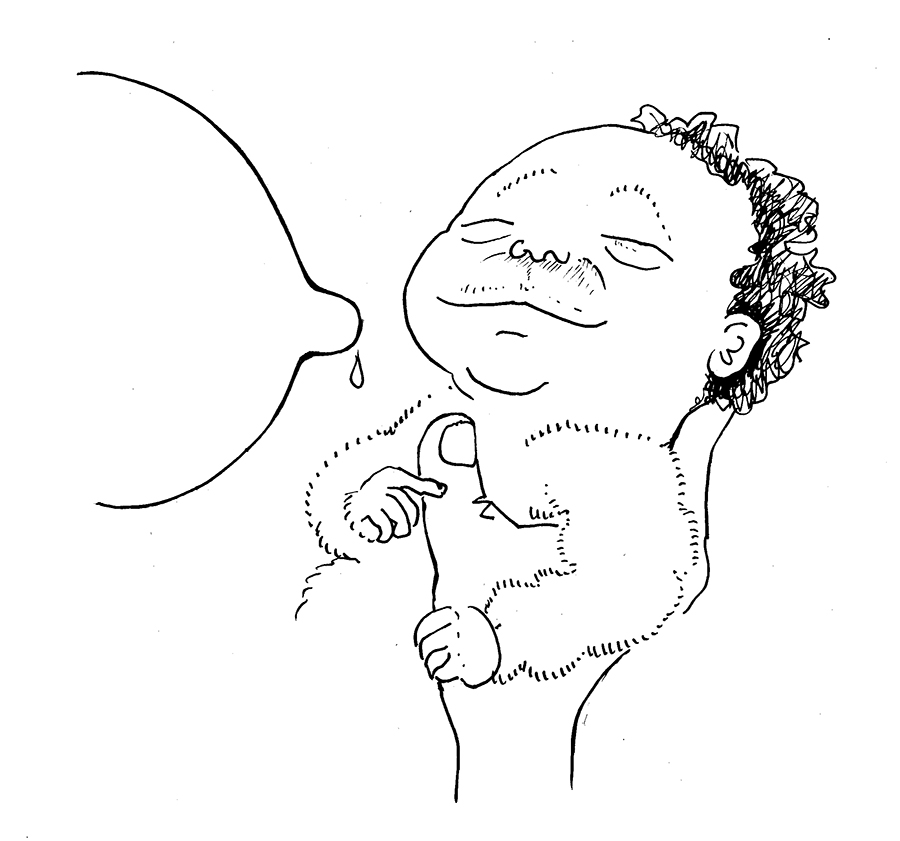
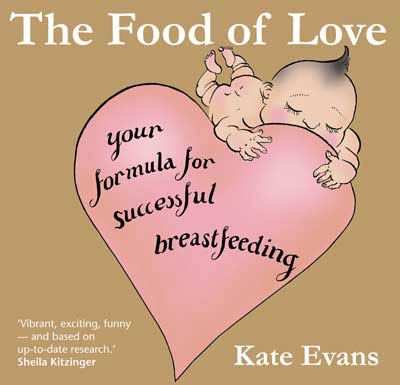
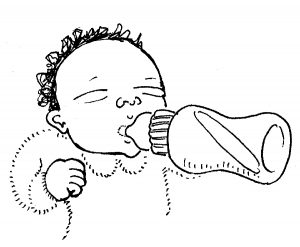
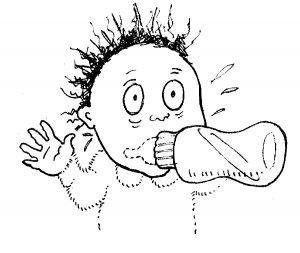
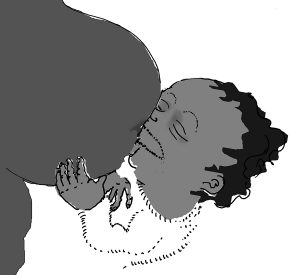
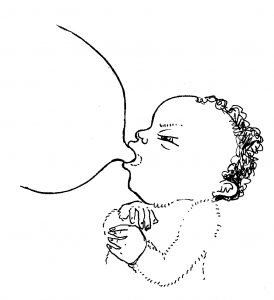
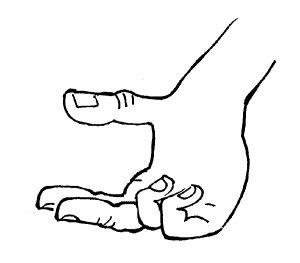
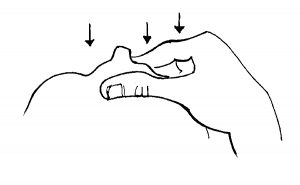
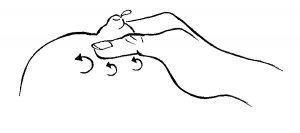

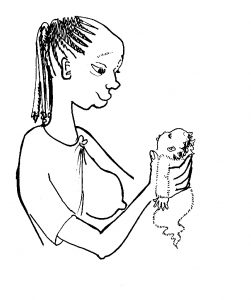
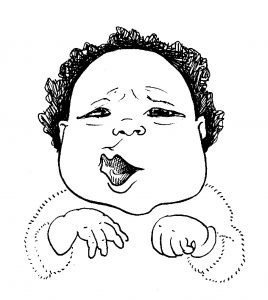
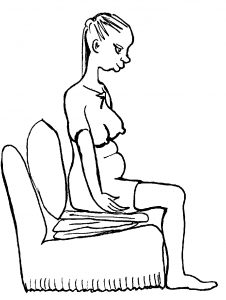
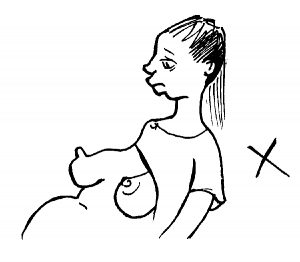
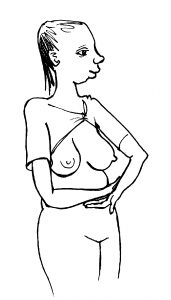
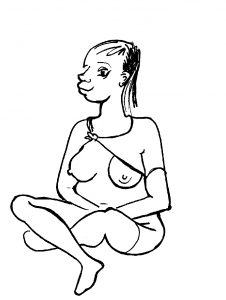
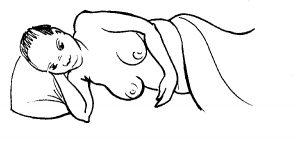
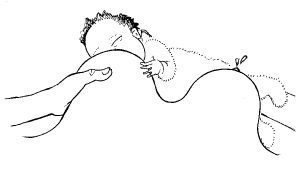
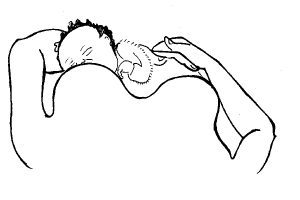
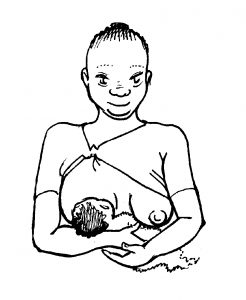
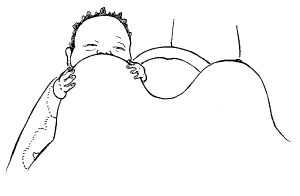
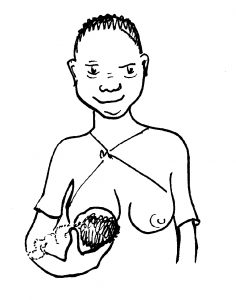
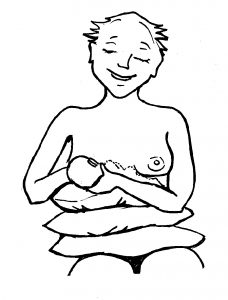
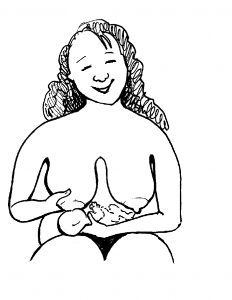
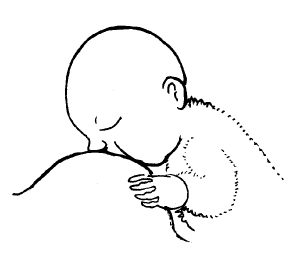
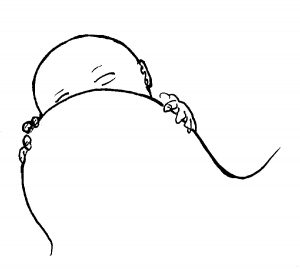
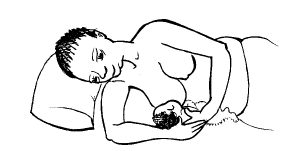
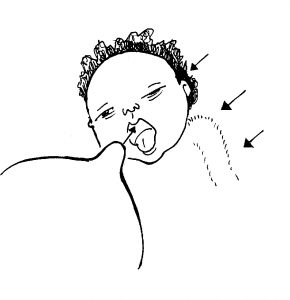
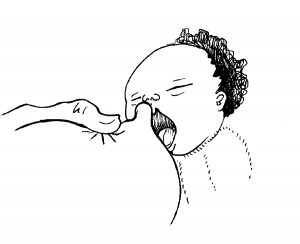
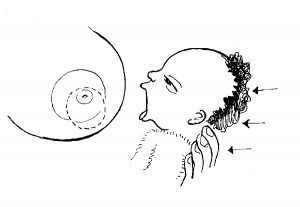
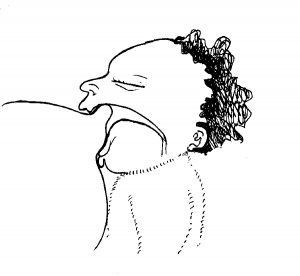
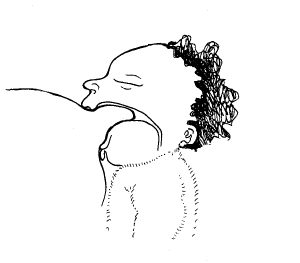
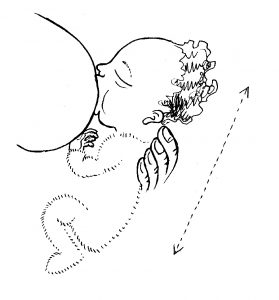
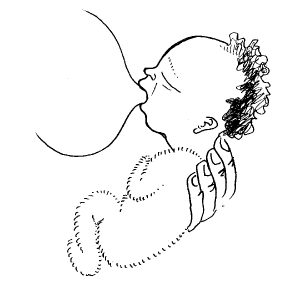
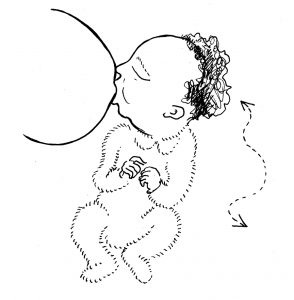
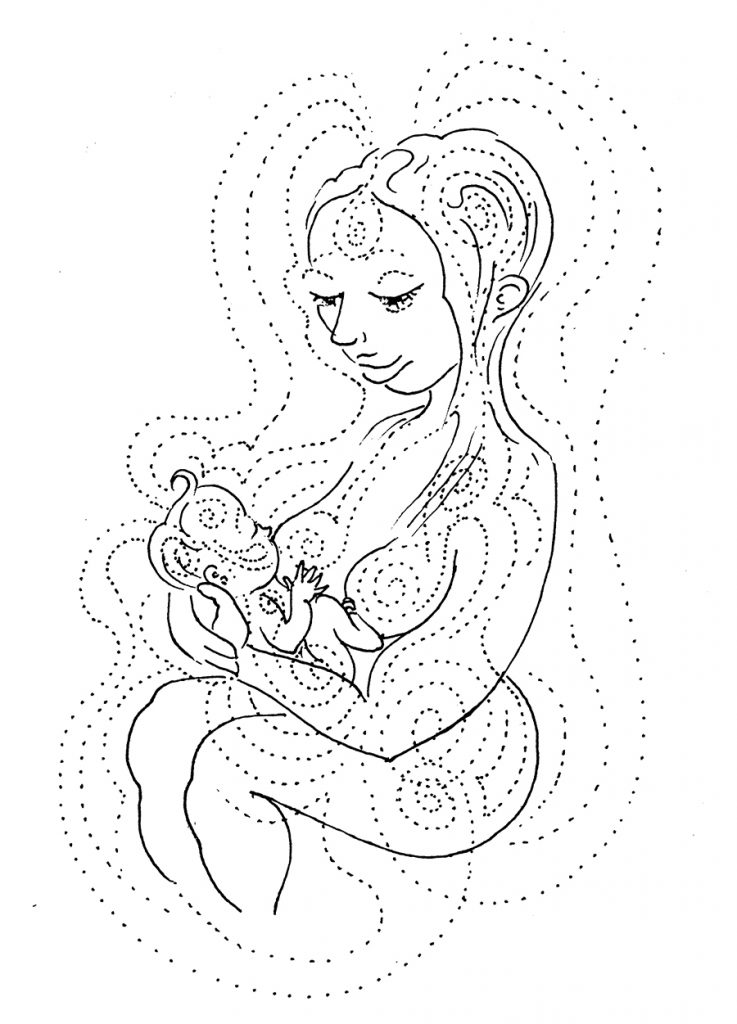
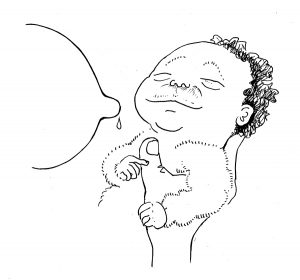

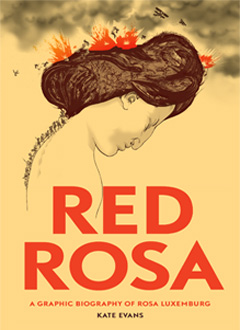

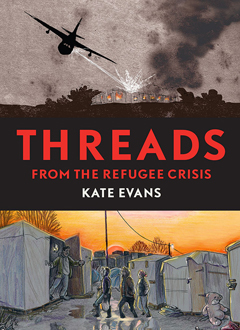
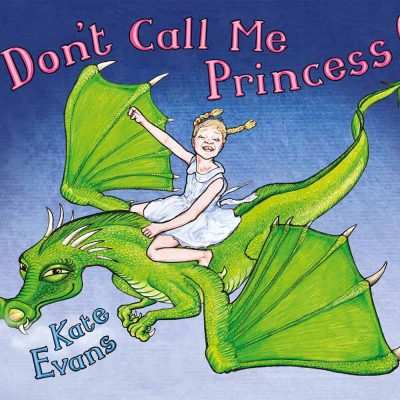
holly Padfield-Paine (verified owner) –
Catherine (verified owner) –
Kate, your books rock! Not only that, but my order arrived very quickly too 🙂
Cartoon Kate –
This surprises me, as I am very slack at posting them!
Isla (verified owner) –
Very happy, such a great book and arrived quickly.
Marian (verified owner) –
My absolute favourite of all books on being a new parent and having a new baby. So much useful information and such a sane approach